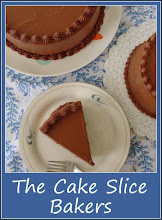I hope everyone had a wonderful Christmas. I can’t believe its over for another year. I have no idea where December when – whooosh – it’s gone! I’m so behind on my blogging but as its still winter I’m sure a few extra festive posts are still permitted. Mince pies are a case in point. It wouldn’t be Christmas without mince pies. I only learnt to like them a few years back, but even before I enjoyed eating them, their gorgeous spicy aroma and very appearance always made it feel much more festive having them around.
This year I made my mince pies extra festive by using a snowflake cutter for the pastry top as I like the way this allows some of the filling to peak through the gaps as well as letting some of the sweet spicy smell waft up to waiting guests. I used a jar of shop bought mincemeat (check its gluten free) but I did add my own twist on it by adding some extra cinnamon and a generous slosh of Amaretto liqueur. This helped perk up the mincemeat and no doubt perked up the eaters too!
I made a sweet version of my gluten free shortcrust pastry recipe. It’s short, but not so much that it crumbles into a thousand pieces the minute your try to take a bite. The rice flour adds a faint grittiness, in a good way, so that it reminded me a little of shortbread.
Soon the house was full of the warming aroma of spices, citrus and alcohol which really enhanced the Christmas mood and drew people into the kitchen as they followed their noses to the oven. I made normal sized ones and then a few minis with the scraps of leftover pastry.
I couldn’t resist pinching one just out the oven. It was a little too hot and I burnt my mouth, but it tasted so yummy. My only complaint would be that I didn’t put enough mincemeat in. I made them again later on and made sure to fill them better. So make sure you’re generous with the mincemeat filling.
Did you know that it is considered good luck to eat a mince pie on every day of each of the 12 days of Christmas, 26th December and ending with Epiphany on 6th January, so there is still plenty of time to enjoy them!
Gluten Free Mince Pies
Ingredients - Pastry
100g brown rice flour
60g potato flour
70g white teff flour
30g icing sugar
1 tsp xanthan gum
110g butter
1 egg, lightly beaten
1 tbsp cold water
Filling
GF Mincemeat to fill (around 300g)
5 tsp Amaretto (almond) liqueur
½ tsp cinnamon
Method
Mix the mincemeat in a bowl along with the Amaretto and cinnamon. Set aside.
Preheat the oven to 180C and have ready 18 bun tins.
Mix all the flours and the xanthan gum together in a bowl to combine.
Make sure you butter is soft, if not blast it in the microwave for a few seconds. Add to another mixing bowl along with half the flour mixture, icing sugar, egg and water. Beat with a spoon or spatula to form a paste. (Yes I know this goes against all traditional pastry making!) Add the rest of the flour and bring the mixture together to form a dough, switching to your hands at the end. Knead the dough gently for 1 minute to ensure everything is well combined.
Lay a large sheet of cling film on your work surface, place just over half the pastry in the centre and over with another large sheet of clingfilm. Roll the pastry out between the sheets until 3-4mm thick.
Remove the top sheet of clingfilm and use a pastry cutter, a little larger than the size of your bun tins, to cut out circles and use to line the hollows of the bun tins.
Fill each with a heaped teaspoon of mincemeat.
Roll out the leftover pastry and use a star or snowflake cutter to cut out shapes for the top. Press the tips of the star into the sides of the pastry bases to seal.
Brush with a little milk and bake in the oven for 17-20 minutes until golden.
Allow to cool in the tin for 5 minutes before transferring to a cooling rack. Dust with icing sugar just before serving.
Makes around 18 mince pies (I made 14 normal and 12 mini’s)
Honey Baked Ham & How To Spiral Cut At Home
10 hours ago



































